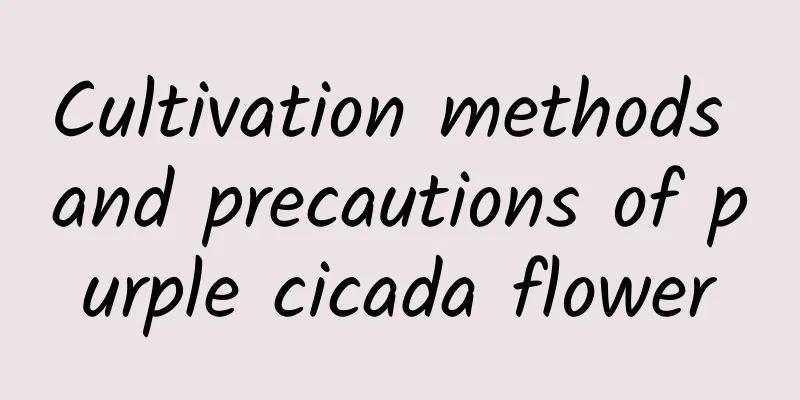Cultivation methods and precautions of branched apricot

1. Maintenance methods1. Temperature: It is suitable for growing in mild places, and the temperature should normally be maintained between 15 and 25 degrees. If the ambient temperature in winter is too low, frostbite is likely to occur, so the temperature needs to be above 10 degrees in winter. 2. Watering: The soil must have a certain amount of moisture, but water accumulation should not occur during the watering process. Flooding will cause root rot of the plant. At the same time, the number of watering needs to be determined according to the condition of the plant. If the branches and leaves of the plant are relatively full, there is no need to water it. You can continue to add water when the branches and leaves of the plant are shriveled. 3. Light: It needs to receive warm and sufficient light. It cannot be exposed to direct sunlight in summer. In winter, it needs to be placed in a place with mild sunlight, so that the color of the plant will become greener. 4. Fertilization: During the growth period, you can replenish nutrients in time and apply some foliar fertilizer. At the same time, you can dilute the fertilizer before applying it. If the fertilizer is too heavy, it can easily burn the plant. 2. Breeding techniques1. Reproduction: Sowing and cuttings are two important methods of reproduction. When cuttings, choose tender branches about ten centimeters long and then insert them directly into the soil. They will germinate in about twenty days. When sowing, be careful not to place the seeds too close together, otherwise the plants will not be strong when they grow out. 2. Pruning: It may grow too tall during its growth period, so it needs to be pruned to ensure normal growth and plant shape. At the same time, some yellowing and withered branches and leaves should also be pruned. 3. Problem diagnosis and treatment1. Disease: Soft rot may occur, which can be controlled and prevented by spraying carbendazim solution. 2. Pests: Nematodes will appear when too much fertilizer is applied, which will seriously harm the roots of the plant. They can be eliminated by repotting. IV. Other issues1. Toxicity: It is not poisonous. Many people raise it for its ornamental value. 2. Can it be grown at home? Yes, because this plant is cute in appearance and highly ornamental. |
>>: Cultivation methods and precautions of purple leaf sorrel
Recommend
How to grow the flower of wealth and honor
1. Pot soil selection Fuguimantang is a variety o...
How to care for grafted Christmas cactus
1. Lighting The newly connected ones can be place...
A complete guide to propagate Globe amaranth!
Seed propagation Seeding is the most commonly use...
Cultivation methods and precautions of clover
1. Soil selection When planting clover, you shoul...
How to take care of newly bought hibiscus
1. Change the soil The newly bought hibiscus is s...
What are the varieties of calamus?
Gladiolus Gladiolus is a perennial herbaceous pla...
How to grow potted jasmine? Does jasmine need to be pruned?
1. How to raise 1. Soil: For jasmine grown in pot...
How to grow mountain laurel
1. The soil should be thicker Mountain laurel pre...
What flowers can be used for winter weddings
1. Rose: The first thing that comes to mind is of...
What is the best season to plant dragon fruit?
What month is suitable for planting dragon fruit?...
The growing environment and local conditions of cactus
Cactus growth environment and conditions Cactus f...
How to plant coral flower seeds
1. Choose the seed If you want to grow coral flow...
Can purple bamboo plum be grown indoors? Is it auspicious to put it indoors?
1. Can it be kept indoors? Although it looks gorg...
How to prune the crabapple
The purpose of pruning Begonia Early flowering of...
How to propagate Ficus ginseng
Cutting propagation The season for cutting propag...









